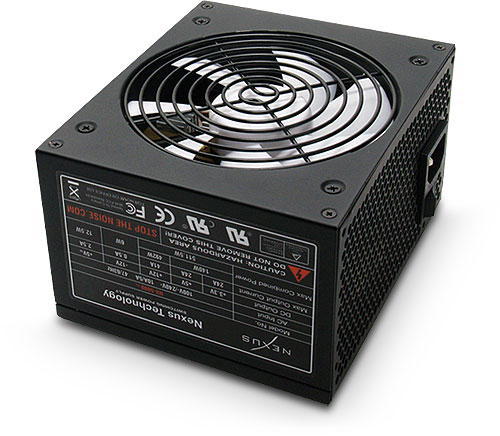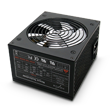NX-5000 R3 530W Real Silent 80+ Power Supply Discontinued | |
| More variations available Show | |
Nexus NX-5000 R3 530W Real Silent 80+ Power Supply
The Nexus NX-5000 Real Silent Power Supply has been a best seller since its introduction in 2003. Nexus has put their engineers to work to improve the product in every aspect possible. The new NX-5000 has more power, has a higher efficiency and is quieter - a lot quieter in fact.
The New NX-5000 provides 530 Watt True Power and the efficiency level meets the 82 Plus Bronze standard. Nexus continued with the Black and White appearance, but made the chassis a bit smaller. As the years go by the components get smaller and more efficient so less space is needed to house all the necessary parts. A system benefits from this little bit of extra space as there is more room for airflow and cooling. And as icing on the cake, the new NX-5000 has great looking X-mesh sleeving to keep the cables nice and tidy.
By carefully selecting each component Nexus aim at creating the best possible of mix of components to make our power supplies as quiet as possible. They are confident that their power supplies are leading the market when it comes to solid performance at the lowest possible noise level. All Nexus’ PSUs are tested in a ISO-certified chamber for noise tests. It is important to know that the background noise in such a chamber is a little over 15 dB(A). These are the best possible conditions for these tests.
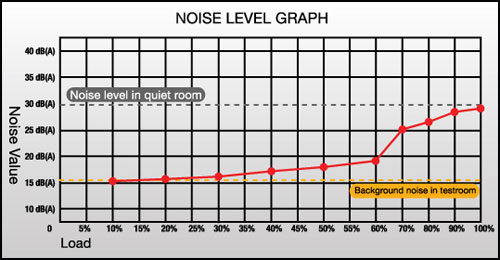
The Nexus NX-5000 power supply is guaranteed to provide 82% efficiency. This means the power supply is using the power it is drawing from the wall outlet more efficiently and therefore less electricity is wasted. Obviously this is better for the environment and helps to reduce the electricity bill! Also, a more efficient power supply also results in a cooler power supply.
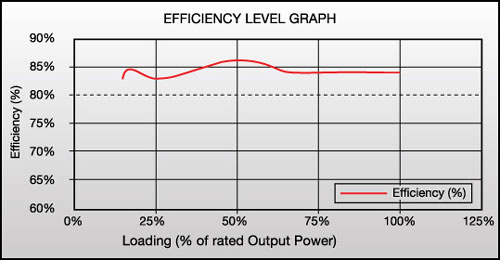
Features
- Single 12V rail
- 82% efficiency; complies with 80PLUS bronze specifications
- Sleeved cables with X-mesh
- Active PFC
- Real Silent 12cm fan, from 15dB(A)
- Excellent airflow, honey-comb grill
- Full range automatic; auto voltage selection
- Multiple safety features such as: overvoltage and short-circuit protection
- Ball bearing fan
Review
silentpcreview.com
The Nexus NX-5000 lived up to its claims of being “Real Silent” while delivering 530W. It scored very high in both electrical and noise characteristics, demonstrating low ripple, extremely good voltage regulation over its entire range of load tests and crossload tests, good efficiency characteristics over its entire working range, and perhaps most importantly, managed to stay quiet across its entire operating range…
| Specifications | NX-5000 R3 |
|---|---|
| ATX12V Version | v2.2 |
| 20+4-pin ATX Connector | Yes |
| ATX12V (4-pin) support | Yes |
| EPS12V (4+4-pin) support | Yes |
| EPS12V (4-pin) support | Yes |
| PCI-E support | Yes, 1x 6+2-pin and 1x 6-pin |
| Number of floppy drive connectors | 2 |
| Number of hard drive connectors | 6 |
| Number of SATA power connectors | 6 |
| Master power on/off switch | Yes |
| Acoustic noise level | From 15 dB(A) |
| Fan size | 120mm, thermally controlled |
| Length of motherboard power cable | 35 cm (approx) |
| +3.3V maximum output current | 24 A |
| +5V maximum output current | 24 A |
| +12V maximum output current | 41 A |
| -12V maximum output current | 0.5 A |
| +5VSB maximum standby current | 2.5 A |
| Combined maximum output +3.3V / +5V | 140 W |
| Mains input voltage | Full range automatic |
| Physical dimensions | 86 x 150 x 125 mm |
| Certificates | CE, WEEE, RoHS, UL, CB, TUV, FCC |
| Warranty | 24 months |
| EAN barcode | 8717371696955 |
| Specifications | NX-5000 R3 |
|---|---|
| ATX12V Version | v2.2 |
| 20+4-pin ATX Connector | Yes |
| ATX12V (4-pin) support | Yes |
| EPS12V (4+4-pin) support | Yes |
| EPS12V (4-pin) support | Yes |
| PCI-E support | Yes, 1x 6+2-pin and 1x 6-pin |
| Number of floppy drive connectors | 2 |
| Number of hard drive connectors | 6 |
| Number of SATA power connectors | 6 |
| Master power on/off switch | Yes |
| Acoustic noise level | From 15 dB(A) |
| Fan size | 120mm, thermally controlled |
| Length of motherboard power cable | 35 cm (approx) |
| +3.3V maximum output current | 24 A |
| +5V maximum output current | 24 A |
| +12V maximum output current | 41 A |
| -12V maximum output current | 0.5 A |
| +5VSB maximum standby current | 2.5 A |
| Combined maximum output +3.3V / +5V | 140 W |
| Mains input voltage | Full range automatic |
| Physical dimensions | 86 x 150 x 125 mm |
| Certificates | CE, WEEE, RoHS, UL, CB, TUV, FCC |
| Warranty | 24 months |
| EAN barcode | 8717371696955 |
Customer Reviews
Very Quiet PSU
Bought this PSU to fit into my new Silver stone Case (ML03) due to the small space available, the PSU fitted ok and it’s very quiet.
Would have got 10/10 but due to the large amount of cable I gave PSU 9/10, the space saved has all been filled with excess of cables.
I would recommend this PSU to any one that wants a Small and very quiet PSU.
Best Customer Service yet
The PSU was as stated and as quiet, delivered next day as promised, wish I had found this company earlier. No long waits for answers from either Tech or Customer Service.
Low noise with rock-solid reliability
Since installing this compact and efficient PSU, my PC has been quieter and I’ve had no more BSODs relating to my video card. There’s a very slight hint of fan bearing noise, but it’s on the edge of audibility - that’s the only reason I haven’t given 10/10.
It’s certainly been worth paying for one made with modern internal design and decent components - I can recommend ignoring all the cheap and obscure rebranded PSUs, and getting one like this with an 80PLUS certification.
Specification of target PC:
- Core i7 920 CPU
- ATI 4850 HD video card, which should require at least 450W.
- microATX case
Impressions So Far...
Having only had this for three days I can’t talk about it’s reliability. However this is a very quiet power supply indeed, very little noise or vibration comes from it. It’s a tad shorter than a standard ATX PSU but still sat in the mount in my coolermaster case without issue.
My only gripe with it, no instructions at all…
FAQ
Do high wattage power supplies cost more to run?
No - the rated wattage of a power supply refers to the maximum amount of power it can deliver at full load, not how much power it uses. More powerful PSUs will consume around the same amount of power as lower powered power supplies in any given PC system, so your electricity bill will not be higher when using a more powerful power supply!
The best way to reduce your electricity bill when using your PC is to use a more efficient power supply or make your PC consume less power by removing components which are not needed, such as extra drives and expansion cards, or by choosing a cooler-running processor or graphics card.
My brand new power supply doesn’t work! Am I doing something wrong?
It’s possible that the power supply may be faulty, but here are some simple things to check. Firstly, a power supply will not work if you simply plug it in and flick the switch. The power supply will only turn on if you connect it to a working motherboard and associated items (processor, memory, video card, etc). It is actually the motherboard which tells the power supply when to switch on.
Secondly (if applicable), check the voltage is set correctly to 115/230 volts depending on what country you are in. Thirdly, if possible it would be good to try the power supply in another PC to see if it works, or try another power supply in your PC to see if that works. You can then tell whether it is the power supply which is faulty or the actual PC itself. If all else fails, please contact us for further support, and/or return details.
Why should I buy a whole new PSU when I could just replace the noisy fan in my existing one?
Virtually all the noise generated by a PC power supply originates from the cooling fan inside it, so simply replacing the fan with a quiet fan may seem an obvious way to go. However, if you are thinking about attempting this operation, please bear the following points in mind:
- Your existing power supply will be designed to run with a specific amount of airflow in order to adequately cool the components inside and reducing the airflow may lead to overheating and damage to the power supply and/or PC.
- All PC power supplies contain very high voltages and even with the power disconnected, the voltages stored in the capacitors can be easily enough to kill. It is not recommended to take the cover off any PC power supply for this reason unless you are absolutely confident of your own ability. Because of the grave dangers involved, all PC power supplies by law carry a warning label forbidding removal of the power supply case.
- There will be no standard PC fan connector inside the power supply to use to connect a replacement fan, and it would probably have to be soldered directly into the PCB inside the power supply, or have a specialist power connector attached. This can be a tricky operation to say the least.
Please consider the above points very carefully before proceeding with an operation to replace the fan in your existing power supply!
What is PFC (Power Factor Correction)?
If you are interested in being “green” and saving the planet, you might like to read a short explanation of how our power supplies can save energy using Active PFC (Power Factor Correction), not to be confused with Power Conversion Efficiency which is also very good in most of our PSUs. “Power Factor” is a measure of how efficiently electrical power is consumed. Ideally, Power Factor would be 1 (or 100%) and known as unity.
Unfortunately in the real world, Power Factor is reduced by highly inductive loads down to values of 0.7 (70%) or less. This induction is caused by equipment such as small electric motors, fans, fluorescent lighting ballasts and transformers such as those in PSUs. This is bad news for the electricity generating companies who can impose a surcharge on heavy users if they have a consistently low Power Factor, as more electricity has to be produced to make up the shortfall.
Power Factor Correction (PFC) is used in some equipment to minimise the inductive component of the electrical current. This helps to reduce the losses in the electrical supply to that equipment. Power Factor Correction capacitors are normally used to reduce induction in an electrical load, which minimises wasted energy and hence improves the efficiency of a company and reduces electricity costs.
It is not usually practical to reach unity, i.e. Power Factor 1, and it seems that most electricity supply companies accept consumers having a Power Factor as low as 0.94 (94%) without imposing a surcharge. Unfortunately most of the cheap (and not so cheerful) PSUs tend to have a Passive PF as low as 0.75 or 75% which in a large office can lead to a PF surcharge.
However, the good news is that most of Quiet PC’s PSUs implement a system known as Active PFC which involves some clever electronics. This means that their power factor (PF) can be as high as 0.94 or 94% (at full load), while harmful harmonic frequencies are reduced to well below legal requirements. So by using our products, you can be happy in the knowledge that you are doing your bit to save the planet!
How do I know what size of wattage power supply I need?
The best answer we can give to this question is to go ahead and take an intelligent “guesstimate”! There are no hard and fast rules about what size of power supply any given PC needs as a minimum. Our advice would be that if you are replacing an existing power supply, then consider a new one at least of the same wattage as the old one. In addition, if you wish to build in a “safety margin” to allow for reliable running and possible future upgrades, consider adding 100-200 watts to the rating of your existing unit.
If you are building a new PC, most customers now buy a power supply rated in the region of 500-800 watts depending primarily on the performance level of their graphics card(s) and number of drives to be installed. But in any event if you are unsure about which power supply would be best for your PC then please do contact us by phone or email and we will be happy to give you a specific recommendation based on your budget.
My new PSU came with a 24-pin connector but my motherboard needs 20 pins! Do I need an adaptor cable?
We receive many customer enquiries about this. In fact, most of the 24-pin compatible power supplies we sell come with special motherboard connectors which can be converted to 20-pins with no additional conversion cables. All you need to do is look carefully at the connector and you will see that the end four pins can be slid off, turning the connector into a 20-pin compatible one (see below) - easy when you know how!
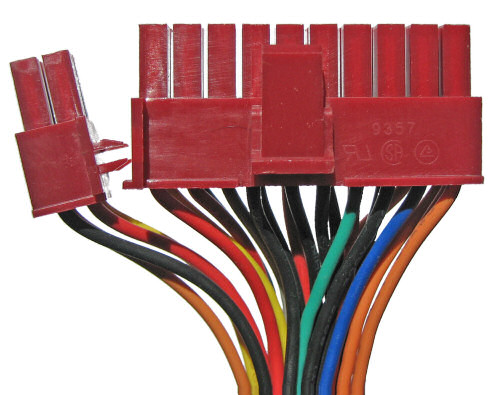
Image showing how to change a power supply’s 24-pin motherboard connector into a 20-pin connector by unclipping the end four-pin blockWhat do the PSU safety protection abbreviations mean?
There are many possible safety protections a PSU can have. Below is a list of what each abbreviation means. Please note, not all PSUs have all safety protections.
- OCP - Over-Current Protection
- OVP - Over Voltage Protection
- UVP - Under Voltage Protection
- SCP - Short Circuit Protection
- OPP - Over Power Protection
- OTP - Over Temperature Protection
- UL - Underwriters Laboratories, more information.
- TÜV - Technical Inspection Association, more information.
- CE - European Conformity, more information.
- FCC - Federal Communications Commission, more information.
- RoHS - Restriction of Hazardous Substances Directive, more information.
- WEE - Electronic waste, more information.
- 80 PLUS - Promotes energy efficiency for PC power supplies, more information.
- ErP - Energy Related Products, more information.
More information on certification marks can be found here.
Top Quiet Power Supplies

Streacom ST-ZF240 ZeroFlex 240W Passive PSU

Streacom ST-NANO160 160W nanoPSU and AC/DC adapter block

Seasonic PRIME Fanless 500W 80PLUS Platinum Modular Power Supply
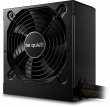
be quiet System Power 10 650W 80Plus Bronze PSU
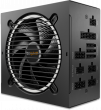
be quiet Pure Power 12 M 750W 80+ Gold Fully Modular ATX3.0 PSU

Streacom ST-NANO120 120W nanoPSU and AC/DC adapter block
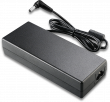
Akasa 120W Thin mini-ITX power adapter, AK-PD120-04M
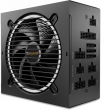
be quiet Pure Power 12 M 550W 80+ Gold Fully Modular ATX3.0 PSU
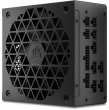
Corsair SF850L 850W SFX-L Semi-fanless ATX 3.0 PSU

be quiet Pure Power 11 400W Quiet PSU 80PLUS Gold

